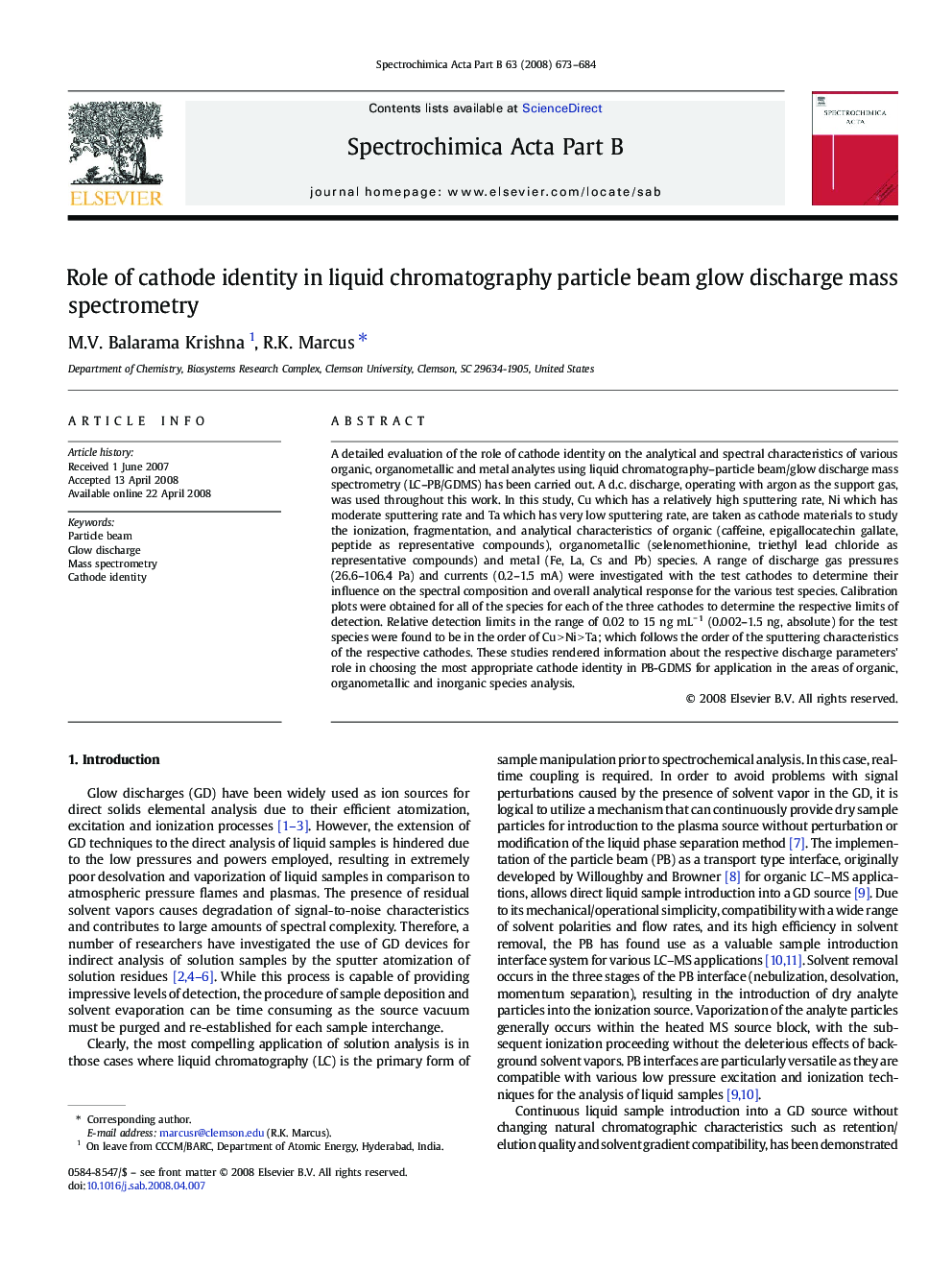| Article ID | Journal | Published Year | Pages | File Type |
|---|---|---|---|---|
| 1240497 | Spectrochimica Acta Part B: Atomic Spectroscopy | 2008 | 12 Pages |
A detailed evaluation of the role of cathode identity on the analytical and spectral characteristics of various organic, organometallic and metal analytes using liquid chromatography–particle beam/glow discharge mass spectrometry (LC–PB/GDMS) has been carried out. A d.c. discharge, operating with argon as the support gas, was used throughout this work. In this study, Cu which has a relatively high sputtering rate, Ni which has moderate sputtering rate and Ta which has very low sputtering rate, are taken as cathode materials to study the ionization, fragmentation, and analytical characteristics of organic (caffeine, epigallocatechin gallate, peptide as representative compounds), organometallic (selenomethionine, triethyl lead chloride as representative compounds) and metal (Fe, La, Cs and Pb) species. A range of discharge gas pressures (26.6–106.4 Pa) and currents (0.2–1.5 mA) were investigated with the test cathodes to determine their influence on the spectral composition and overall analytical response for the various test species. Calibration plots were obtained for all of the species for each of the three cathodes to determine the respective limits of detection. Relative detection limits in the range of 0.02 to 15 ng mL− 1 (0.002–1.5 ng, absolute) for the test species were found to be in the order of Cu > Ni > Ta; which follows the order of the sputtering characteristics of the respective cathodes. These studies rendered information about the respective discharge parameters' role in choosing the most appropriate cathode identity in PB-GDMS for application in the areas of organic, organometallic and inorganic species analysis.
